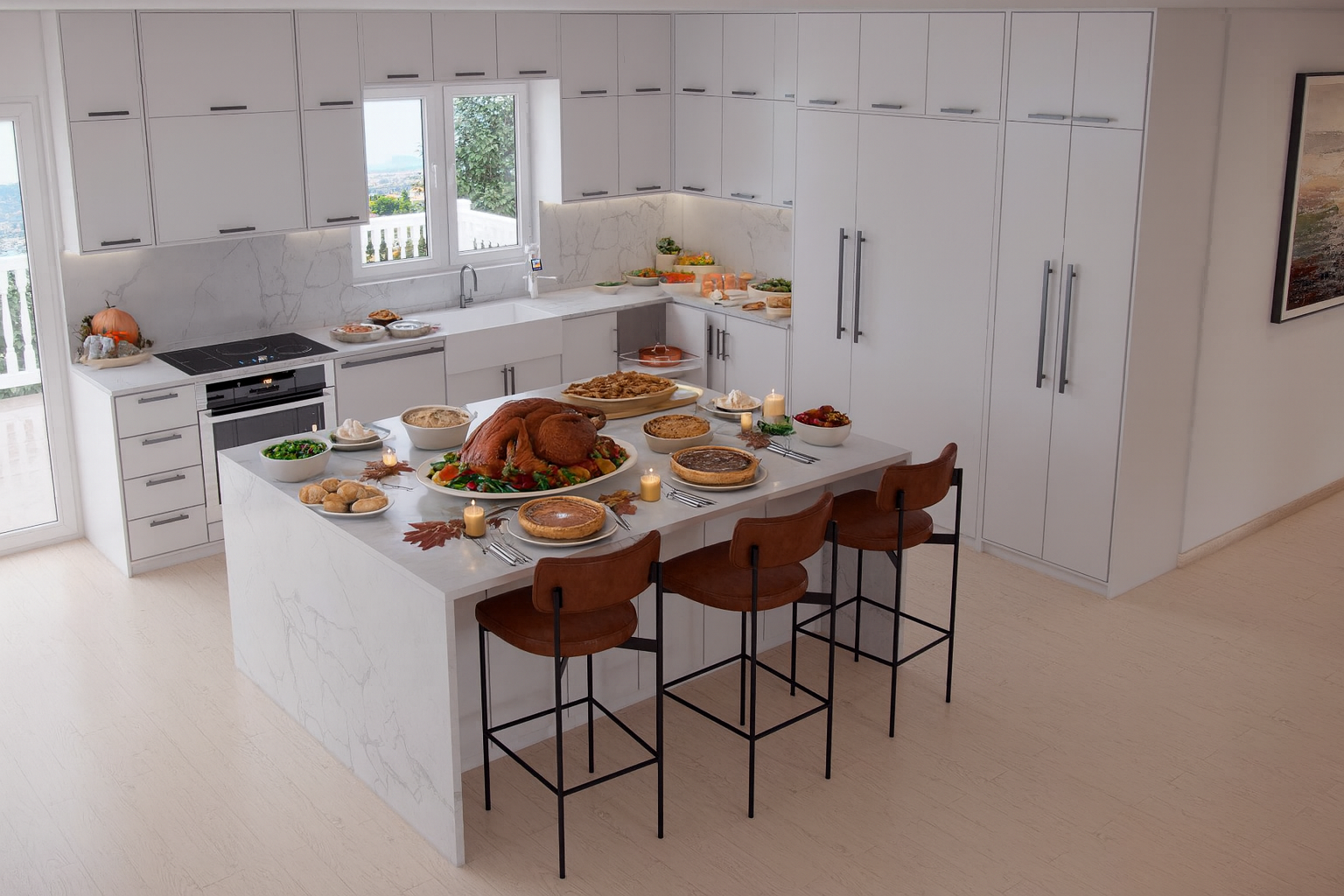Mixing wood tones is a challenging and intimidating task for many people. I often work with clients who have wood floors, wood baseboard/casing or wood cabinets that are a fixed element of their home. They often have a hard time envisioning how we can incorporate a wood dining table or chairs that don’t match their existing wood. When done right, mixing different woods can make a space feel warm and give it personality. Likewise, using just one wood tone within your space can actually make it feel flat and boring. In the next few minutes, I am going to teach you how to easily and properly mix wood tones in your space to give it a fun, unique touch.

Identify
The very first step to making a cohesive wood palette for your home is to identify what type, color and texture of wood exist in your home. Make a list of their location and elements (color, type and texture). Most homes have a number of areas that have wood or faux wood materials; most often they are found on the floors, baseboard/casings, or kitchen and bathroom cabinets. In addition to this, you may have wood furniture that you’d like to incorporate in your wood palette. Don’t forget to include them in your list as well! Note on this list your dominant wood tone (whichever one is the most abundant) as this will drive design decisions in the next few steps.

Envision
Once you know what you’re working with, the next step is to envision how you want your space to feel. Even if you are doing a simple project, such as adding in new bar stools, envisioning is still a key part of making a cohesive design. One of the best ways to envision what kind of wood you should add is by considering contrast. If your home has mostly dark or black wood it is fairly reasonable to say that adding a lighter or white wood would provide great contrast to the space. One of the most important things to avoid during this step is clashing woods. Clashing woods are those that are similar but not the same. For example, we had a client with light oak floors and they wanted to add a light oak coffee table with a slightly orange tone. I worked with them to instead find a dark oak coffee table that contrasted with their prominent wood tones instead.

Balance
Balancing a space is always key to making a successful design. Without balance, no design can thrive. Creating a balance of wood tones throughout your home will make it feel much more natural and complete. Having one room where you have mixed tones while having cohesive matching wood throughout the rest of the space will feel disjointed. Instead, use your first space as inspiration and begin using mixed wood throughout the rest of your home!









